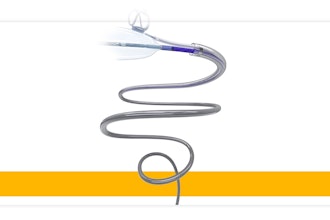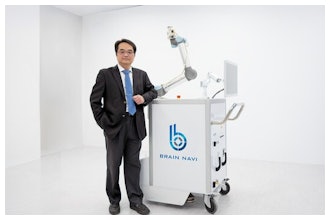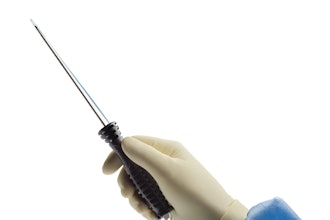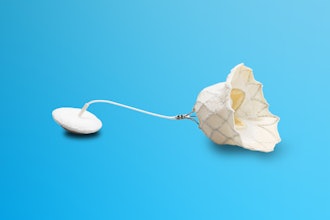
GLENDALE, Ariz. (AP) — There is a bridge that runs from Tommy John and Dr. Frank Jobe in 1974, all the way to Shohei Ohtani, Justin Verlander and Bryce Harper. A thread that connects an increasing number of baseball's biggest stars. Mostly on the mound, but at the plate, too.
An operation that changed everything.
Almost 50 years ago, on Sept. 25, 1974, Jobe reconstructed a torn ulnar collateral ligament in John's left arm. It was a pioneering achievement for Jobe and a lifeline for John, who went from a career-ending injury to 14 more years in the majors — and an eponymous connection to sports medicine that would live on long past his playing days.
Tommy John surgery.
"I wouldn't still be standing here if it weren't for a surgery like this," Chicago White Sox pitcher Michael Kopech said. "It's doubled the length of my career."
Alongside arthroscopic surgery and ACL reconstruction, Tommy John is one of the biggest advancements in sports medicine in the last 50 years, according to Dr. Tim Kremchek, a longtime physician for the Cincinnati Reds.
"It (has) just prolonged and saved so many careers," he said. "Not just in baseball, but now for some other sports that we're doing it for so many other athletes, especially overhead athletes. But in terms of baseball, I think it's allowed us to see some of the greatest players in the world continue to play for a long period of time."
The roots of the surgery can be found in Jobe's work at Rancho Los Amigos, a Southern California hospital, where doctors used tendon transfers to help people with polio.
Jobe just applied to same concept to John's elbow. He removed the palmaris longus tendon from John's right arm, drilled four holes in his left elbow and then used the tendon to replace the torn ligament.
"It wasn't a new idea," Jobe said in July 2013, about seven months before he died. "It was just new for the elbow."
The actual surgery largely remains the same as the one Jobe performed in 1974. But doctors have made improvements in terms of protecting the ulnar nerve, along with avoiding excessive scarring, putting the ligament in the right place and creating the proper tension.
The evolution of the procedure — along with the physical evolution of the players themselves — is seen in the results on the field.
Verlander won the AL Cy Young Award in 2022, two years after he had Tommy John surgery. Kopech had the operation in 2018, and he averaged 95.2 mph on his fastball last season. Dodgers pitcher Tyler Glasnow had Tommy John in 2021, and he struck out 162 batters in a career-high 120 innings last year. Harper, who had the procedure in November 2022, returned to Philadelphia's lineup in May.
Then, of course, there's Ohtani, who received a record-breaking $700 million contract from the Los Angeles Dodgers within months of his second major elbow operation.
"If you put it in dollars and cents, I think there's no question that Tommy John is the most valuable reconstructive procedure there is," said Dr. Neal ElAttrache, the head team physician for the Dodgers and the NFL's Los Angeles Rams.
Following thousands of successful Tommy John surgeries — everyone from middle schoolers to major leaguers — the biggest challenge for players just might be the monotony of the lengthy rehab process.
The arm that had the surgery is in a cast at an approximately 90-degree angle for about 10 days following the operation. After it comes off and the stitches are removed, it takes months to recover the full range of motion. That's all before the player starts throwing again on flat ground.
It typically takes at least a year before a big leaguer returns to the majors.
"I remember the very first day of throwing," said Dodgers pitcher Tony Gonsolin, who had surgery on Sept. 1. "It was like 30 throws, nice and easy, and just felt super foreign, like I'd never thrown before. Took some video on it, and they did not look pretty at all. Then I threw a couple days later and it felt much better."
As Gonsolin makes his way through the process, he is grateful for the opportunity presented by Tommy John — one he knows wasn't available to big leaguers before 1974.
"I think the evolution of the surgery and just the sheer medical breakthrough from it allows to extend people's careers," he said.
"It gives everybody a second opportunity."
The operation was a source of pride for Jobe later in life. ElAttrache recalled being at a dinner with his wife after the Baseball Hall of Fame honored Jobe and his work. He was seated at a table with Jobe, John and Hall of Fame pitcher Sandy Koufax — whose illustrious career ended at age 30 due to chronic elbow pain.
"Frank said, 'Sandy, the only bittersweet part of this, I wish I would have been smart enough to think of this a few years earlier. You would have been pitching a lot longer,'" ElAttrache said.






















